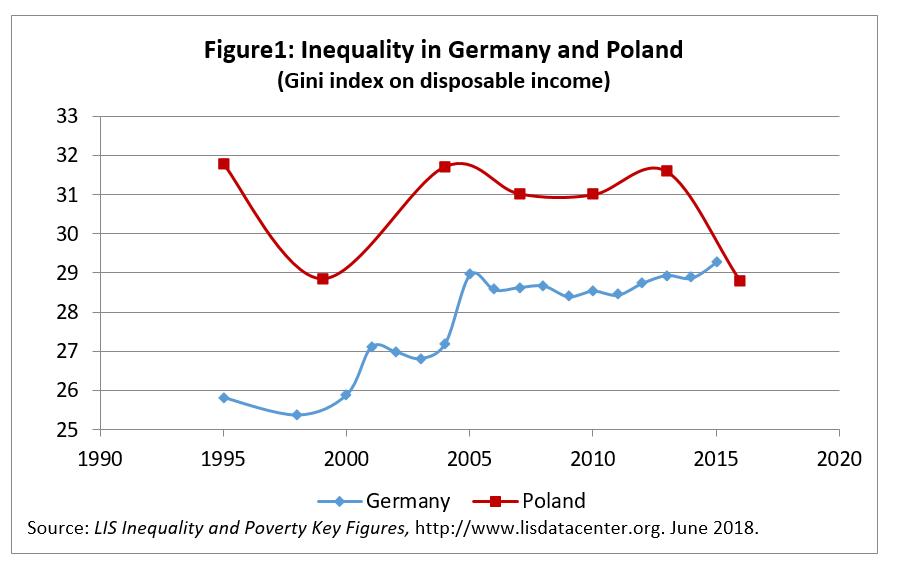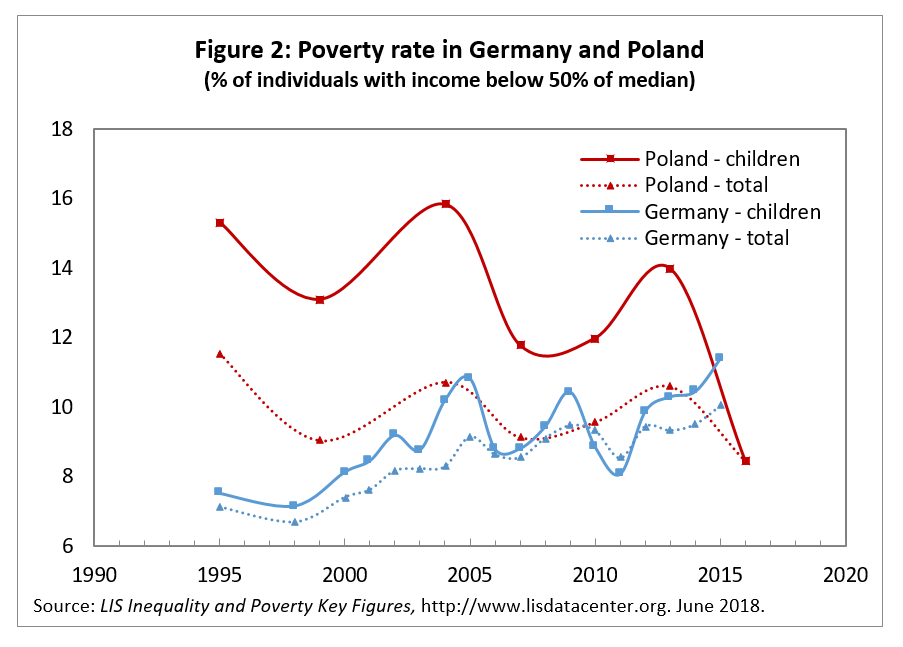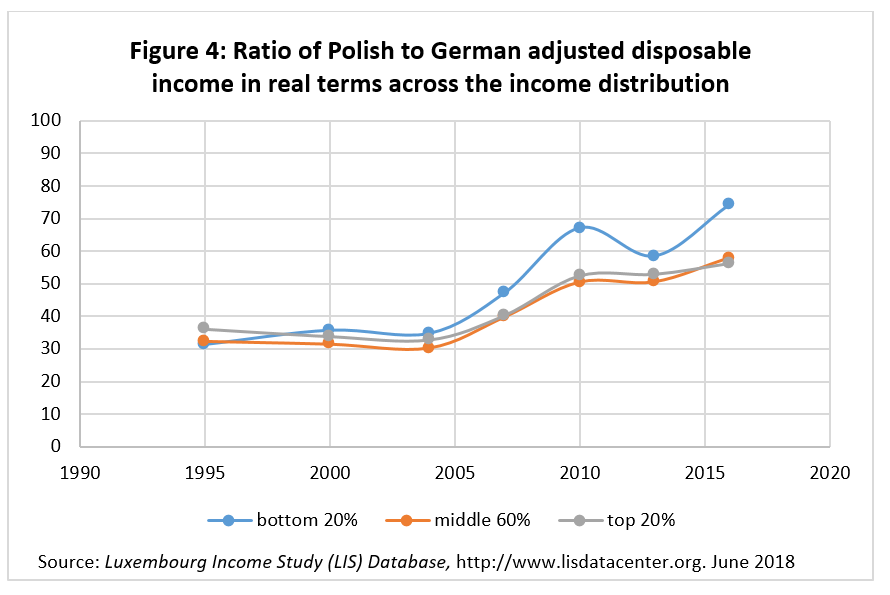Issue, No.6 (June 2018)
Catch me if you can – a comparison of Poland with Germany
Poland is a country that struggled with many free market economy issues related to labour market and welfare economics because of the socio-economic transition process starting in the 1990s. In recent years, Poland has been showing a fairly good economic growth and it is expected to stay on this path together with some other EU member states. According to the OECD Economic Outlook 2018, the unemployment rate is falling since 2013, wages have been growing rapidly from 2016, and “consumption is growing strongly thanks to a booming labour market and the recent child benefit programme, which has buttressed households’ disposable income.” Is this a sign of economic convergence?
In this short note, we would like to highlight several economic trends that could be revealed from harmonized Polish microdata over 20 years. We believe that this is best done, when putting it in comparative perspective, and we have chosen to compare Poland to its neighboring high-income economy, namely Germany. Specifically, we would like to explore how Poland is performing in terms of inequality levels, poverty and wage growth.


Figure 1 shows the plot of the Gini index of disposable income for Poland and Germany. Income inequality levels of the two countries were very different in the mid-1990s, with the German Gini index being 6 points lower than the Polish one, and gradually converged towards a very similar level over more than 20 years. While Poland’s inequality measure goes rapidly down from 2013 to 2016, the indicator of German inequality was on the rise from the 2000s onwards (with a small downwards trend in the middle). A very similar story is portrayed in Figure 2 that illustrates relative total and children poverty rates. A striking finding is that, by the end of the period, the poverty rate is significantly lower in Poland than in Germany, especially when looking at households with children. This is very likely due to the spurt of social transfers for children since 2016, but further investigation is needed. The decreasing poverty levels and income inequality are most likely due to the redistribution: as a matter of fact, the percentage difference between the Gini index for disposable income and market income (defined as the sum of labour income, capital income, occupational pensions and private transfers) increases in Poland from 35% in 2013 to 39% in 2016, which signifies an increased effect of the public transfers redistribution.


Figure 3 shows the median wage growth adjusted for PPPs and inflation with reference to 1995. While German data indicate a small downward shift of wages until the mid-2000s and a very small fluctuation over the last 10 years, Poland’s path of wages was on the rapid rise from 2004 to 2010 and again from 2013 to 2016. It does not mean that Polish wages are higher in real terms than those in Germany. Despite the firm growth of wages, the income in real terms in Poland is still lower than in Germany. Figure 4 demonstrates this by plotting the ratio of disposable income (adjusted for housing costs) in Poland and Germany in real terms across the bottom 20%, middle 60% and top 20% of the income distribution. In 1995, the Polish middle class (middle 60%) received income that was only around 32% of what German middle class household had. In the most recent year this figure has changed to around 58% — more than 25% increase in disposable income in real terms. It is noticeable that the bottom 20% of Polish households have an adjusted disposable income that is getting close to the bottom 20% in Germany, only 25% lower. Could this imply that in the near future fewer and fewer low-income Polish workers will consider entering the German labour market? This becomes a very likely scenario if trends in wages continue in both countries, ceteris paribus.
It is only after Poland’s accession to the EU in 2004 that we observe a rapid wage growth until 2010. The next 3 years were not very promising — as indicated by the LIS data from 2010 and 2013 – the stagnation of wages, higher income inequality and poverty rates were on the rise. It is evident that the year 2016 brought some significant changes to the well-being of Polish households in terms of falling income inequality and poverty as well as acceleration of wages. According to forecasts of the European Commission (2018) and the OECD (2018), this trend should continue at least into 2019, so Polish households have a good chance to catch up further in income with their older siblings from the family of the European Union.
Last, but not least, is Poland catching up with Germany because Germany seems to be slowly losing ground in terms of equality levels, dealing with poverty, high labour cost and wage growth? Or is this catching up due to public policies that are embodied within a broader realm of the socio-economic system? We leave these questions open and would like to encourage researchers to take up these issues to provide possible explanations using the LIS data.
References
| Ciucci, M. (2018), “At Glance: Expected real GDP growth for 2019 in EU Member State.” Economic Governance Support Unit (EGOV), Directorate-General for Internal Policies, PE 528.775 – June 2018. Available at http://www.europarl.europa.eu/RegData/etudes/ATAG/2014/528775/IPOL_ATA(2014)528775_EN.pdf |
| OECD (2018), “Poland – Economic forecast summary” OECD Economic Outlook, Volume 2018, issue 1 – Preliminary Version, OECD, pp.203-205, available at http://www.oecd.org/eco/outlook/economic-forecast-summary-poland-oecd-economic-outlook.pdf |
| European Commission (2018), “European Economic Forecast”. European Economy, Institutional Paper 077, May 2018, available at https://ec.europa.eu/info/sites/info/files/economy-finance/ip077_en.pdf |
